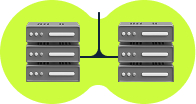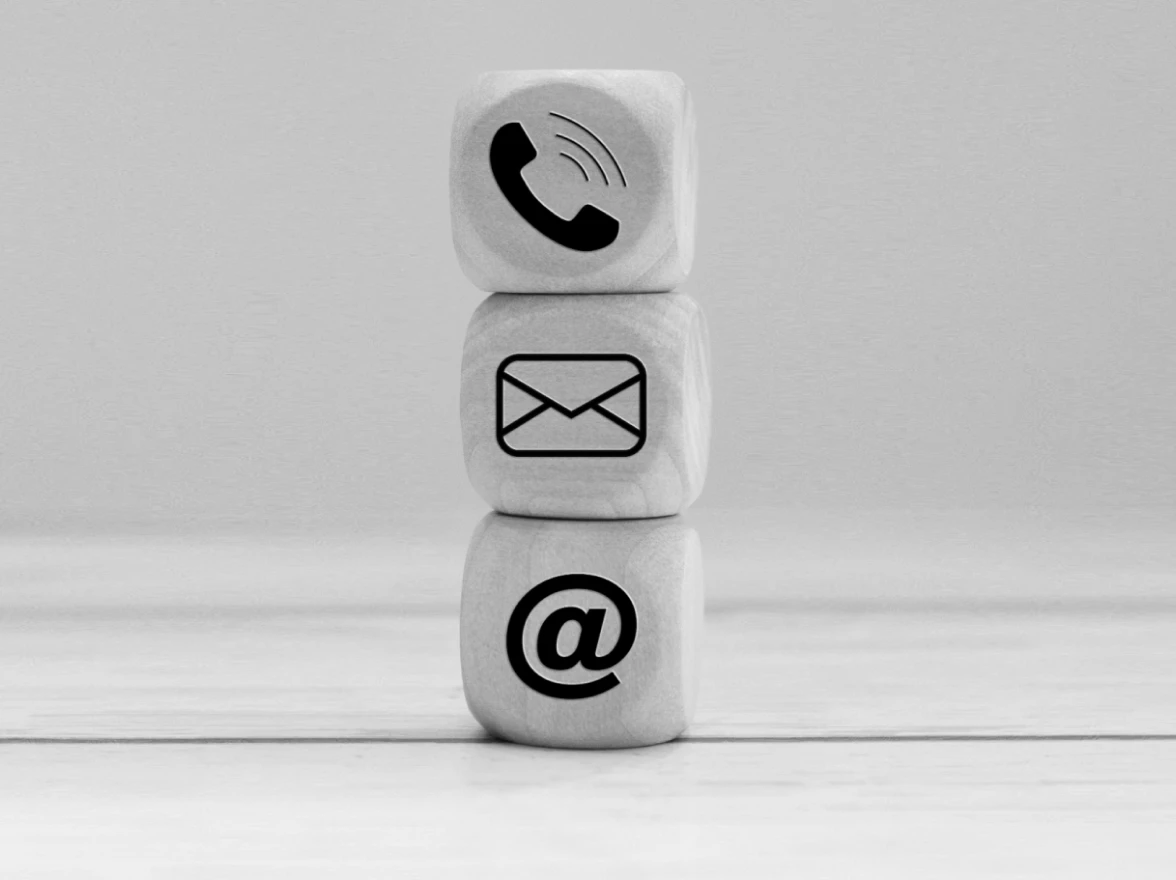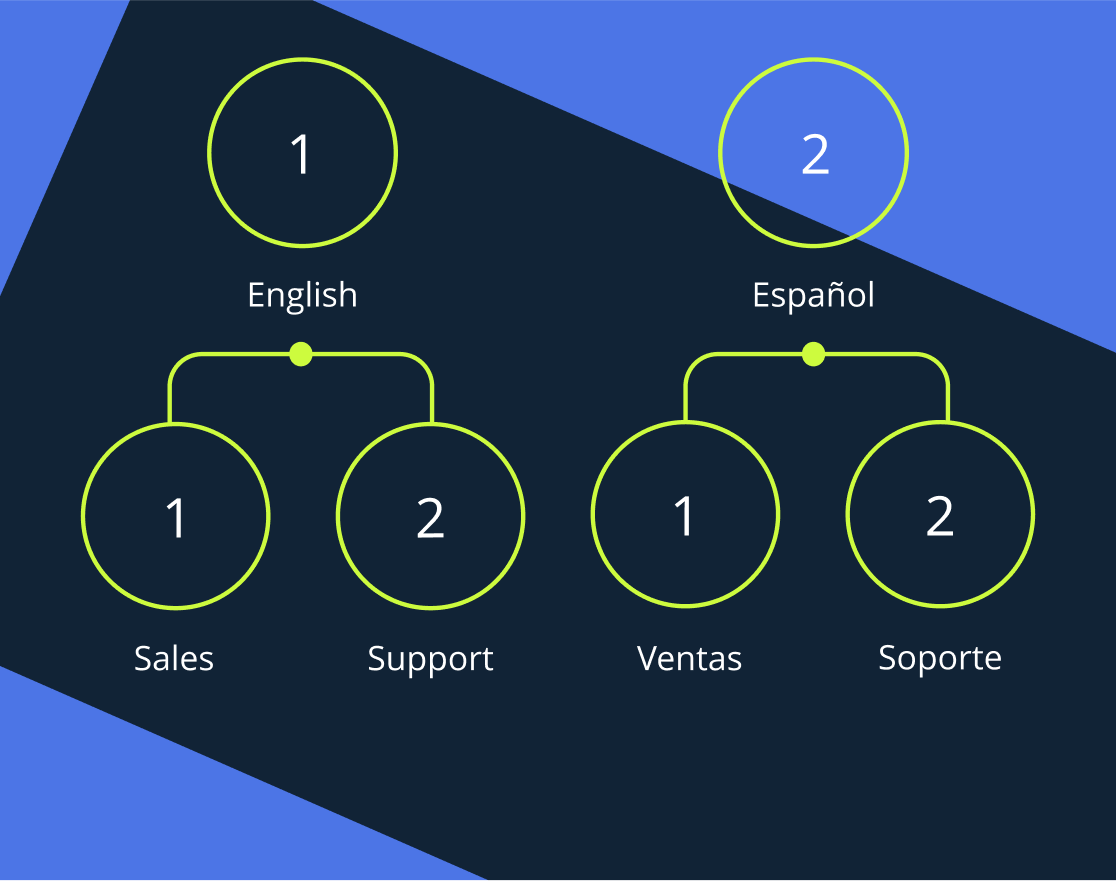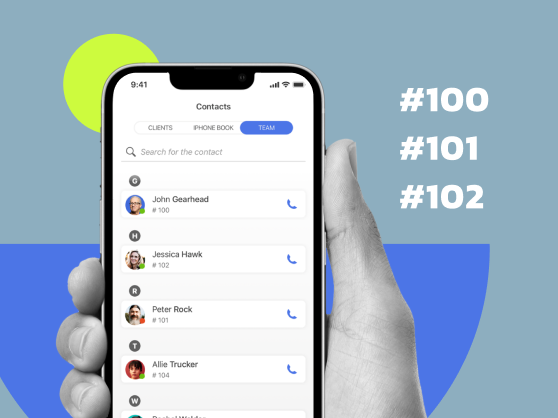Call centers have long been one of the most important ways for larger businesses to keep in touch with their clients, be it a way to help clients with a product, to facilitate a return or other aspects of customer service. But increasingly, in the modern age, the call center is being replaced with the contact center.
Here we will be delving deep into what sets call centers vs contact centers — we’ll talk about the differences, and similarities, and give some tips on how to make a decision and choose the best one for your needs.
- What is a call center?;
- What is a contact center?;
- Key differences between call center vs contact center;
- What are contact center and call center similarities?;
- Call center and contact center pros and cons;
- How to choose between a contact center and a call center;
- So which one is best for you?
What is a call center?
A call center is an entity staffed by call center agents and their managers (or supervisors) who keep in contact with customers and clients via calls. It can be in a physical area, where everyone has their wired phone, or it can be a virtual one in which agents are separated.
Types
There are multiple varieties for using a call center as a service, and all vary based on types of calls or structure. However, all are dedicated to providing some form of customer aid. Here are the main four types:
- Inbound: These call centers deal purely with incoming customer calls. This sort of customer service is therefore best for things like return requests.
- Outbound: On the other hand, these vary in that contact is outbound, from the agents to the customers. This can be useful for bill collection or surveys.
- Virtual: A virtual call center takes phone calls over the Internet, meaning that call center agents can work from home or elsewhere. These can do the same things as previous types but can be cheaper to run or operate, as they do not require renting out a large working area. These often involve the use of call center software.
- Blended: These mix the inbound and outbound centers into one, making it so that employees are capable of dealing with all types of calls. This expands the capabilities of the call center.
How does it work?
Call centers usually operate via the use of two key elements: call center agents and software. They may have other elements, and the call center software can include other elements like hardware, such as desk phones, but without the agent and the software, it is not going to get anywhere. These sometimes include agents being physically present on campus, but sometimes they allow them to work from home or remotely. Agents usually either receive or make calls from clients via paths oftentimes determined by managers.
MightyCall’s software offers call center managers the ability to view all of the activity in your call center in one single spot. They also allow you to monitor calls and to view statistics for your agents’ activity, to help you know that everything is running as smoothly as it should be.
What is a contact center?
A contact center, on the other hand, allows agents to communicate with customers in a variety of channels. These can, similarly to contact centers, be located in a central area where contact center agents are congregated and work together, or it can be a situation in which they work separately.
Types
There are a few different kinds of contact center channels. Namely, four: multi, omnichannel, cloud, and premise.
- Multi-channel: These are better for teams that are not overly large and do not want channels to overlap too much.
- Omnichannel: With these, your agents can contact customers by easily going back and forth through forms of communication.
- Cloud: If your team is spread out but you still want them to function effectively as a single unit in providing proactive customer service, you might want to consider this, which often relies on contact center software.
- Premise: These are the smallest scale and are particularly useful if your team is congregated in a single area and uses physical phones.
How does it work?
Agents working in a contact center help customers and clients. When you use modern contact center software, all the tools a contact center agent might need can be easily accessible in one package. Agents do not have to be present in one single area, but they of course can be if you or the person running the day-to-day management of the contact center deem it best. Managers likewise do not have to be present with agents, though they do oftentimes set up the flows via which agents communicate with clients.
When you take a holistic, complete approach, however, it doesn’t matter where your agents are, since modern technology allows the easy and efficient organization of call flows, intuitive call queues, and more.
Key differences between call center vs contact center
These may seem like easily swappable terms, but they have very different meanings. In this section, we will be going through what each one means for you so that you can most efficiently decide for yourself which could most help your business.
In the chart below, you can see the key differences between contact centers and call centers. Afterwards, we will delve into the details.
| Criteria | Call Centers | Contact Center |
|---|---|---|
| Communication channels | Phone calls | Calls, texts, emails, and otherwise |
| Agent skills | Being able to quickly contact many customers in a short period | Being able to address customer concerns over a range of communication channels |
| Cost* | Generally from $20-100 | Generally from $50-$200 |
| Essential feature | Physical or internet phones | Central web panel |
| Learning curve | Easy | Can be steeper |
| Main goal | Quantity of customer contacts | Quality of customer contacts |
| Popular with: | Telemarketing companies, debt collection agencies, TV sales channels, insurance agencies, etc. |
Banks, delivery organizations, airlines, and colleges, etc. |
Communication channels
The way you communicate matters for providing great customer service.
Well, call centers work using calls (it’s in the name, after all). Almost exclusively, they rely on making phone calls; agents either pick up the phone and start dialing (or they use special call center software with auto dialer capabilities), or it is a call center that just uses outbound calls. Either way, everything revolves around phone calls.
But in a contact center, unlike a call center, more than just phones are used (though calls of course can be made here). Forms of communication that can be utilized here include:
- Phones (already mentioned)
- Online chats built into websites
- Emails
- Texts
Agent skills
What skills do agents need? Well for starters, they need to be able to provide excellent customer service, which usually requires patience and an ability to project kindness.
But what about the dissimilarities? For one, call center agents need to be able to talk – a lot. They need to have high-level communication skills and be polite no matter who the customer is (and some may make that difficult!). If you are not capable of speaking for most of your shift to even some of the rudest customers, it probably is not the job for you, as the job is almost entirely talking on the phone.
But a contact center as a service is another kettle of fish, as here, your agents will have to be able to speak a lot but also may have to use other channels effectively, again with all types of potentially rude customers. This in turn will require strong organizational abilities, patience, and focus. You can aid them in honing their skills with call center coaching and metrics.
Cost
Contact centers and call centers are also different in price. Some settings can be very cheap, while others can be rather expensive.
However, generally speaking, call centers are cheaper than contact centers, due to the complexity of the latter job. Keep in mind that you are not just paying for software – you are also paying for hourly workers. Having a lot of workers who are potentially in skilled professions can run you up a pretty penny; nationwide, an average contact center worker can make about $18 an hour, over double the federal minimum wage.
Essential feature
This is rather subjective; like choosing a call center or a contact center, it ultimately comes down to opinion. However, for us, the most crucial feature in a call center is the phone. Be it a physical phone or a webphone, you literally cannot function without it. But there are other key features, like IVR, customer callback, automatic call distribution, and call monitoring.
In contrast, there are lots of features that could be called key for a contact center. Without a web panel, for example, organization would essentially be impossible. The availability of real-time communication across a range of channels is likewise crucial, otherwise your customer service may be too slow. There, everything is brought together in one convenient place, making it super easy for agents to get their messages across.
Main goal
The main goal of a call center is, simply put, for your call center agents to make contact with as many clients as possible and to achieve all goals via the spoken word (the telephone). This can be done through a variety of ways, be it answers via customized routing schemes, pre-recorded messages, and auto dialers.
The main goal of a contact center is to address all client concerns in the easiest way possible for them. This means providing them with lots of alternatives, allowing them to choose the channel they find easiest.
Learning curve
A call center is going to be relatively easy for agents to learn. They have to understand how the software works, but otherwise, it is more or less “Pick up phone/Dial, speak, hang up, repeat.”
For contact centers, with the variety of channels, agents may take longer to master each, which can be a tougher learning curve.
Popular with…
When you compare contact centers and call centers, you’ll start to notice that the former is more popular with industries that seek to provide comprehensive customer service, whereas the former is more popular with companies that want to reach as many customers as quickly as possible.
Telemarketing companies, debt collection agencies, TV sales channels, and insurance agencies often use call centers, as that can most easily achieve their goals (making contact with as many people as possible or receiving many calls at once). Banks, delivery organizations, airlines, and colleges on the other hand, which require more customer service varieties while also needing to reach out to clients, rely more so on contact centers.
What are contact center and call center similarities?
Call centers and contact centers do differ, of course, but they are also very similar in some respects.
- Purpose: Both have a shared purpose, that is, namely, to make contact with a large set of users.
- Modern technological usage: Both of them (at least, in principle) can use similarly modern technologies. While some call centers may use older tech, it’s not all that common, as it essentially makes it harder for their agents.
- The centrality of the phone: Call centers and contact centers are built around phones. Yes, the latter uses other technologies, but contact is still primarily made through the phone.
- Large amount of contacts: Both of these are built around contacting immense amounts of people per day.
- Can be remote: Employees of both can work from home, in coworking spaces, or somewhere that is not an office (though speaking will likely mean you cannot work in a coffee shop).
- Centered around the internet: Due to modern technologies like VoIP, both can be used via the internet.
Call center and contact center pros and cons
Understand the difference between call center and contact center, but still want to see the pros and cons clear as day? You can find them in our table below:
Call centers
| Pro | Con |
|---|---|
| Straightforward approach | Limits clients to only using their phones |
| Cheaper to train employees | Requires constant talking |
| Less frustrating for older clients | Younger clients may not enjoy it so much |
| Easy to explain | Requires immediate response (conversations cannot be paused unless someone is placed on hold) |
| Can be run from afar | Has a negative connotation |
Contact centers
| Pro | Con |
|---|---|
| Gives clients more options | Requires more training upfront |
| Gives agents more time to respond to queries | Could require agents to do more work |
| Tasks can be more easily divided virtually | Customers will be upset if certain expected options (online chat) are down |
| Often cheaper, when packaged with other features | Requires to have someone manning all possible communication channels |
| Other features can help make communication seamless | May have to train agents on features so as not to waste them |
As you can see, there are pros and cons of both ways to communicate with contact centers or call centers. One is not inherently better than the other – they just are made for contrasting purposes.
How to choose between a contact center and a call center
Here are some of the ways you can help yourself choose a call center or a contact center for your business needs:
- Company size: While it is possible to run these types of businesses with only a few team members, you will likely find yourself swamped if so. But when your business is bigger, you may have more employees who are capable of communicating through different channels.
- Type of clientele: If you are dealing primarily with a certain demographic who prefers to communicate a certain way, it’s better to use a communication channel that is preferable for customers. This may make it so the contact center is better, as it gives you more options for making contacts. However, if your clientele exclusively likes phones (like older folks), you can just stick with a call center.
- Upkeep: With a contact center, you have to make sure your company is proficient at communicating through multiple channels. If you’re great at one but terrible at another, your company’s image will take a hit. If you want things simpler, perhaps go with a call center.
- Training: Being able to make sure that your employees can use your tech, and can use it well, is crucial. While you will have to train employees on both, they will need more training with a contact center, as a call center usually only requires them to understand how the phone calls work.
- Attention to customers: With call centers, you get effectively a “one size fits all” sort of stamp. You cannot provide them with much beyond phone calls, though some include things like texting. With contact centers, you get a more personal touch and can potentially help in a variety of ways.
So which one is best for you?
Call center and contact center both provide solid opportunities, but both also are better for certain types of businesses.
For a call center, it’s best if you:
- Want a general, straightforward approach
- Want to focus on phones
- Want to communicate en masse
For a contact center, it’s best if you:
- Want a more personalized approach
- Want to have multiple channels of communication
- Want to communicate in the best way for customers
Ultimately, the decision on contact center vs call center is yours. While we’ve provided you with the facts, you ultimately know what’s right for your business. Choose wisely!





























